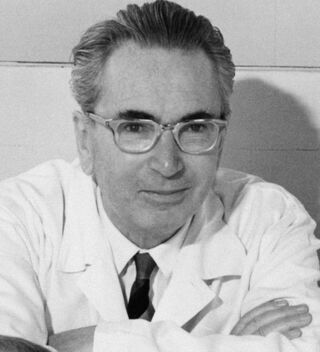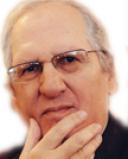Happiness
Secrets of Psychotherapy: What Is Happiness?
What can different psychotherapies tell us about living happier lives?
Posted March 11, 2021 Reviewed by Kaja Perina

Given the painful collective experience of this past year's deadly global pandemic, it may be helpful and timely to consider the following question: What is the relationship between "happiness" and the more tragic elements of human existence? Traditionally, happiness is defined as a prolonged and pervasive state of satisfaction, pleasure, contentment, peace of mind, or joy. Or as Sigmund Freud suggested, the relative absence of suffering and pain. But given the inherently tragic quality of the human condition, with its harsh and ultimately inescapable universal realities of death, disease, loss, suffering, grief, and constant struggle for survival, gratification, and significance, happiness for most of us tends to be a relatively fleeting, transitory, and elusive phenomenon.
Let's look a little more closely, albeit briefly, here at what both contemporary existential therapy and Jung's Analytical Psychology have to say on the subject of happiness. For preeminent existential therapist Irv Yalom, meaninglessness looms large as one of life's ultimate concerns, since we humans seem to be creatures who inherently need and seek meaning. Indeed, our experience of happiness may depend on it, since, as both Viennese existential analyst Viktor Frankl and myself (1996, 2015) emphasize, when we are frustrated, especially chronically so, in our quest to find meaning, we frequently become angry, hostile, embittered, anxious, depressed and, over time, fall into despair, the antithesis of happiness.

Consider Frankl's pithy formula: D=S-M, despair is suffering without meaning. The solution to this meaningless suffering of despair is twofold: first, to decide to dive deep into the despair rather than fending it off, denying it, or suppressing it with drugs or compulsive activities. Much like venturing into the mythological underworld, such a courageous choice to descend into the depths of despair is dangerous, and therefore, best undertaken within the context of a supportive, structured, contained and carefully monitored psychotherapeutic relationship. But despite the risks, what might be found there could be invaluable, sometimes providing the key to freeing one from the dark prison of despair. The secret is that it is only in facing our demons—anger, rage, embitterment, sadness, grief, and other "negative" emotions—that we can free ourselves from their destructive grip. In so doing, these psychological demons are transformed into helpful allies rather than dreaded and debilitating enemies dragging us down into despair and dysphoria and depriving us of enthusiasm, joy, and happiness. Thus, the ancient Greek philosopher Aristotle spoke of cultivating the capacity to co-exist harmoniously and happily with our demons, i.e., the daimonic, calling such an exceptional state of mind eudaimonism or eudaimonia.

Here we are reminded of C.G. Jung, and the remarkable dream of one of his patients: In the dream, as reported to Jung, the patient was buried up to her neck in a pit of red hot embers, with just her head and a shoulder exposed. Jung stood right next to her in the dream. The patient cried out "Save me, Dr. Jung. Get me out of here!" Jung placed his hand on her shoulder and gently but firmly pushed down, submerging her fully in the fiery embers, saying, "Not out, but through."
This is the secret to dealing productively with deep, primal, daimonic emotions such as despair, sadness, grief, fear, anger, or rage: confronting, experiencing, and tolerating rather than avoiding and suppressing them. Moving through them by allowing them to move through us rather than resisting them. Secondary to doing so, some formerly concealed meaning or significance connected to such profound feelings may sometimes be discerned or some new perspective discovered, dispelling the despair or dread.

Another metaphor that Jung used to describe the ultimate therapeutic effects of this process was comparing the powerfully disturbing complex or subjective emotional state to a thunderstorm on a valley floor. Initially, one is in the midst of the maelstrom, but by staying in it and fully experiencing its intensity, one eventually finds oneself on the mountaintops surrounding the same valley (a very Swiss scene), now looking down on the still-raging storm. This sense of transcendence is reminiscent of theologian and existential philosopher Paul Tillich's description of joy as "the happiness of a soul which is 'lifted above every circumstance' ."
Speaking of C.G. Jung's Analytical Psychology, let us consider how it more generally promotes happiness in patients. For Jung, integration of the personality, wholeness, and balance are essential elements for happiness, as is listening to, honoring, and submitting to the Self, which has to do with who we authentically are as a whole human being and is different (and often wants or needs different things) and greater than the ego. For instance, recognizing and honoring one's predominant psychological type is central. Introverts must acknowledge and accept their innate proclivity toward introversion, while at the same time, working toward developing their capacity for extraversion, and vice versa for extraverts.
Perhaps even more importantly, we must be equally willing to acknowledge our "dark side," what Jung metaphorically called the "shadow," and integrate as constructively as possible this repressed, despised, and rejected side of ourselves into the conscious personality. Likewise with our "inner child," the part of ourselves that still knows how to play, be spontaneous, feel joy, love freely, and be fully present in the moment. And, finally, we must meet and embrace our unconscious contrasexual aspect, what Jung referred to in men as the anima and in women as the animus. This process, however, does not typically entail taking on the outward persona of or transforming into and living outwardly as the opposite sex, but rather involves an inner psychological transformation in which so-called feminine qualities such as emotionality, intuition, nurturing, passivity, etc. become part (but not the majority) of a man's mentality and personality and so-called masculine qualities like courage, rationality, aggression, and problem-solving are assimilated productively into a woman's personality. For Jung, it was all about balance, authenticity, and becoming more whole (individuation). Fulfilling each of these fundamental psychological tasks contributes to one's capacity for joy, contentment, satisfaction, and happiness.

To return to Paul Tillich (1952) on the topic of joy, the capacity for which is, most would agree, a key component of happiness, he writes: "Joy is the emotional expression of the courageous Yes to one's own true being." I would broaden this statement regarding the nature of joy, with its close connection to happiness, to include one's willingness to consciously and unconditionally assent and accept existence and life—even with its suffering, frustration, trauma, and pain—on its own terms rather than as we would want it to be. In this sense, radical acceptance of existential reality—of one's imperfect self as, for instance, psychologist Marsha Linehan encourages in her Dialectical Behavior Therapy (DBT), and especially of life's universal tragic aspects, as existential therapy emphasizes—resides at the very heart of human happiness.


